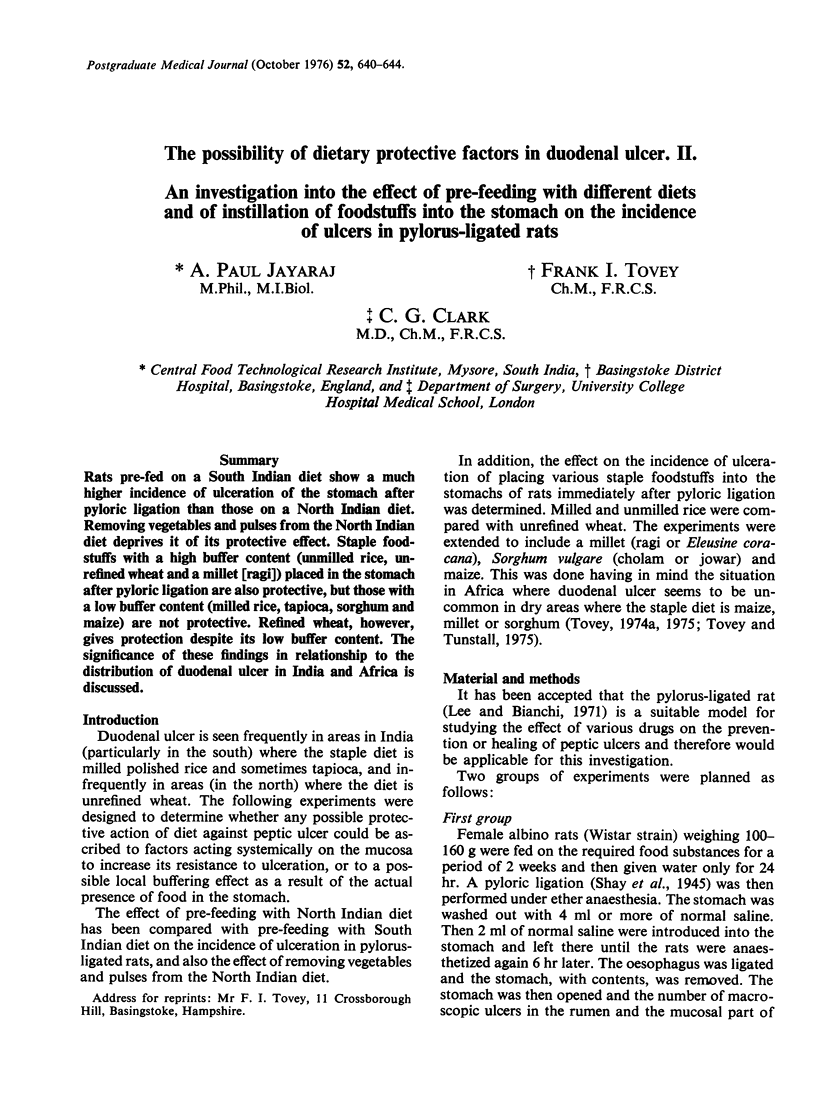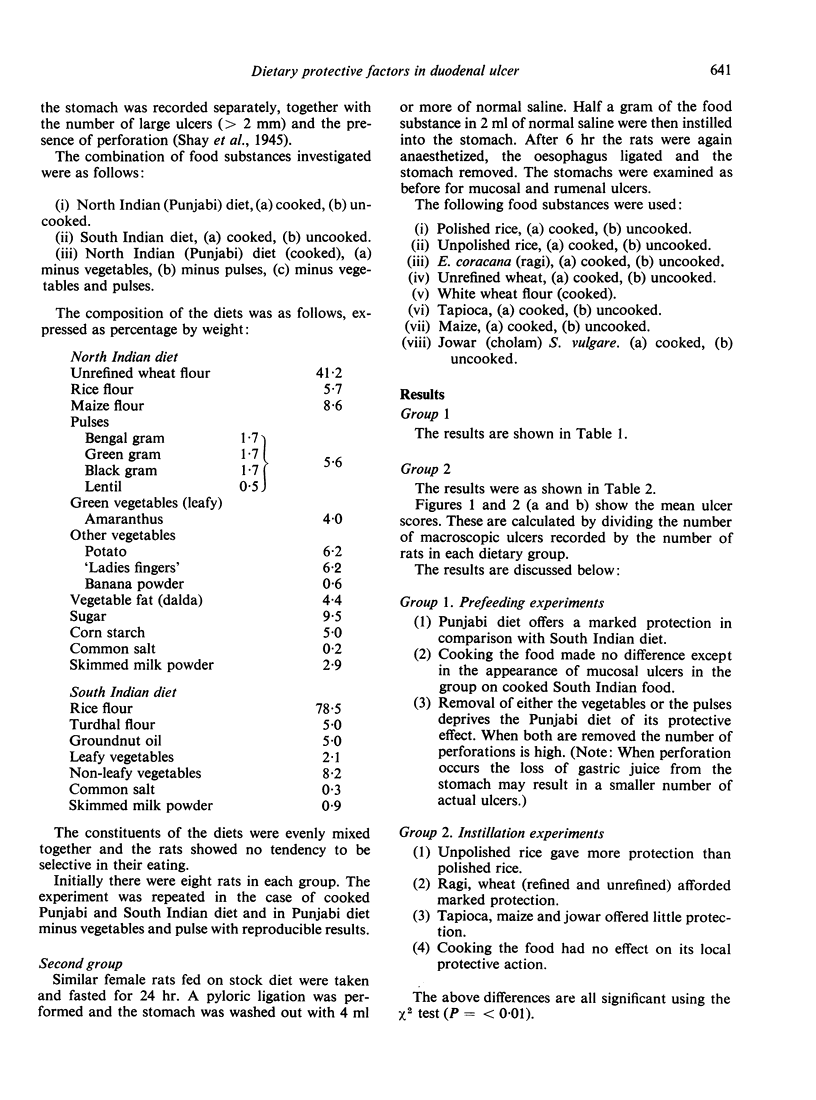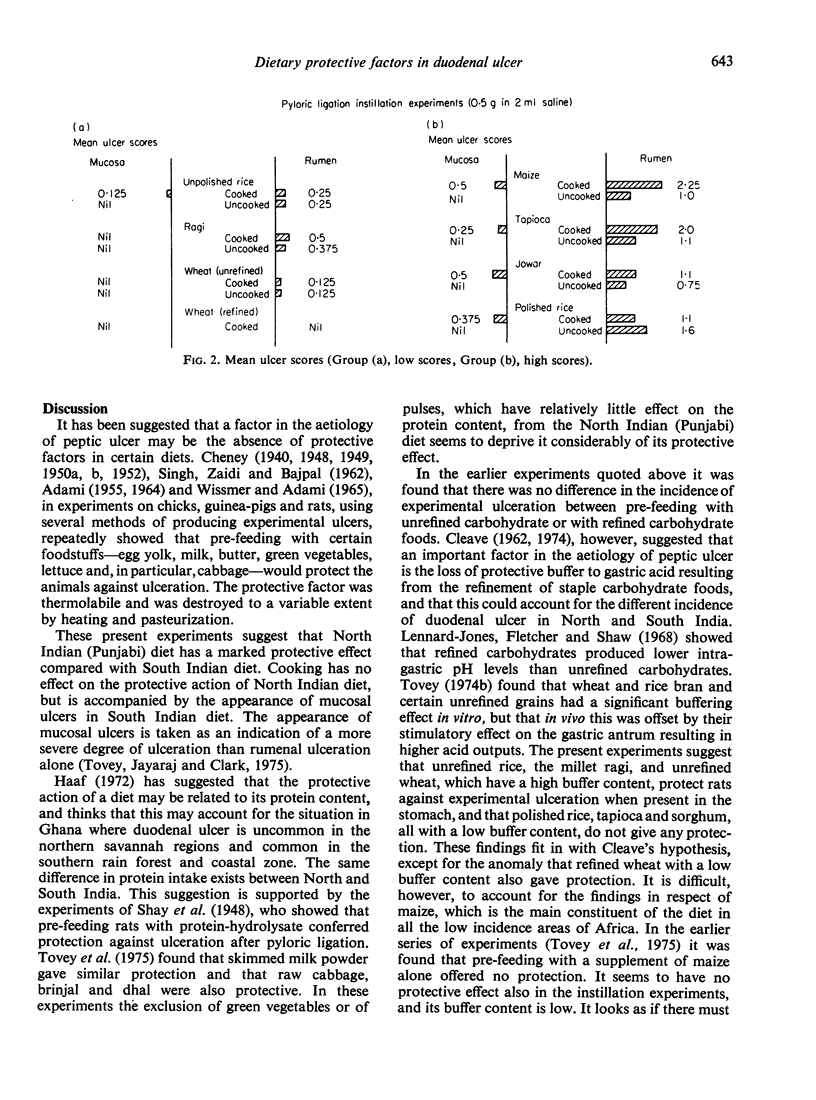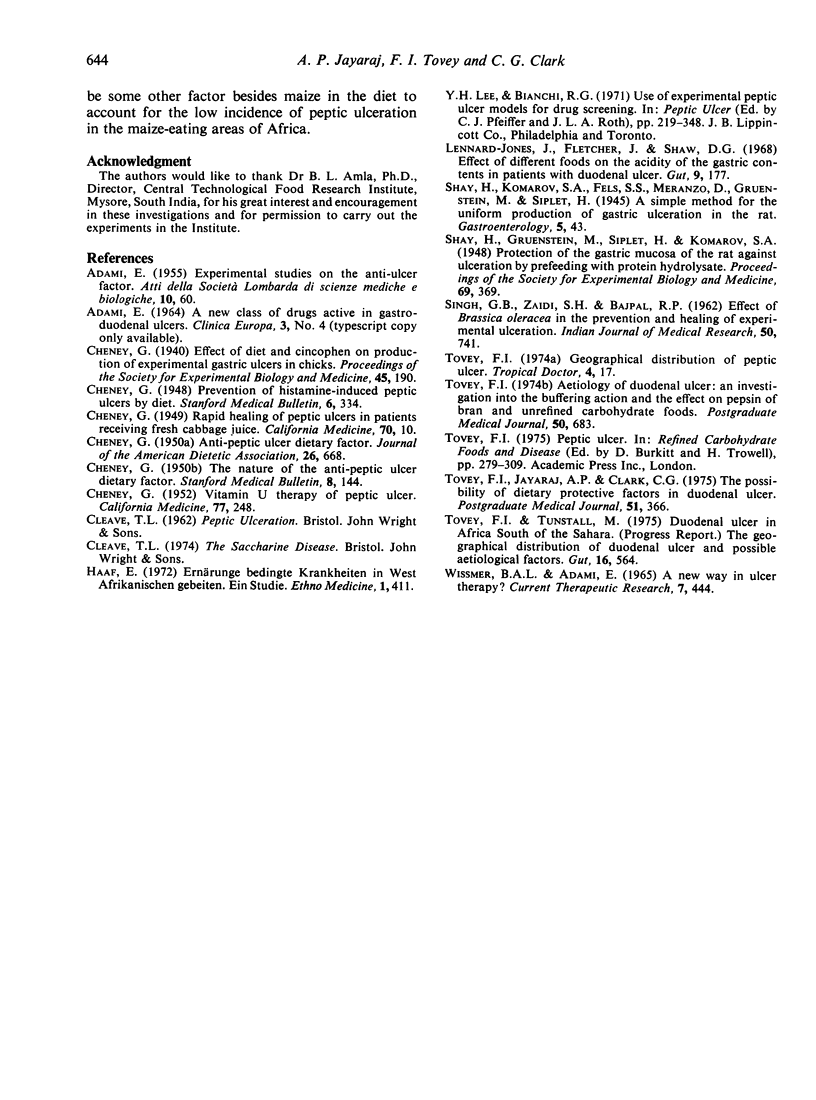Abstract
Rats pre-fed on a South Indian diet show a much higher incidence of ulceration of the stomach after pyloric ligation than those on a North Indian diet. Removing vegetables and pulses from the North Indian diet deprives it of its protective effect. Staple foodstuffs with a high buffer content (unmilled rice, unrefined wheat and a millet [ragi]) placed in the stomach after pyloric ligation are also protective, but those with a low buffer content (milled rice, tapioca, sorghum and maize) are not protective. Refined wheat, however, gives protection despite its low buffer content. The significance of these findings in relationship to the distribution of duodenal ulcer in India and Africa is discussed.
Full text
PDF




Selected References
These references are in PubMed. This may not be the complete list of references from this article.
- CHENEY G. Anti-peptic ulcer dietary factor (vitamin "U") in the treatment of peptic ulcer. J Am Diet Assoc. 1950 Sep;26(9):668–672. [PubMed] [Google Scholar]
- CHENEY G. Rapid healing of peptic ulcers in patients receiving fresh cabbage juice. Calif Med. 1949 Jan;70(1):10–15. [PMC free article] [PubMed] [Google Scholar]
- CHENEY G. The nature of the antipepticulcer dietary factor. Stanford Med Bull. 1950 Aug;8(3):144–161. [PubMed] [Google Scholar]
- CHENEY G. Vitamin U therapy of peptic ulcer. Calif Med. 1952 Oct;77(4):248–252. [PMC free article] [PubMed] [Google Scholar]
- Lennard-Jones J. E., Fletcher J., Shaw D. G. Effect of different foods on the acidity of the gastric contents in patients with duodental ulcer. 3. Effect of altering the proportions of protein and carbohydrate. Gut. 1968 Apr;9(2):177–182. doi: 10.1136/gut.9.2.177. [DOI] [PMC free article] [PubMed] [Google Scholar]
- SHAY H., GRUENSTEIN M. Protection of gastric mucosa of the rat against ulceration by prefeeding with protein hydrolysates. Proc Soc Exp Biol Med. 1948 Nov;69(2):369–373. doi: 10.3181/00379727-69-16725. [DOI] [PubMed] [Google Scholar]
- SINGH G. B., ZAIDI S. H., BAJPAI R. P. Effect of Brassica oleracea var. Capitata in the prevention and healing of experimental peptic ulceration. Indian J Med Res. 1962 Sep;50:741–749. [PubMed] [Google Scholar]
- Tovey F. I. Aetiology of duodenal ulcer: an investigation into the buffering action and effect on pepsin of bran and unrefined carbohydrate foods. Postgrad Med J. 1974 Nov;50(589):683–688. doi: 10.1136/pgmj.50.589.683. [DOI] [PMC free article] [PubMed] [Google Scholar]
- Tovey F. I., Jayaraj A. P., Clark C. G. The possibility of dietary protective factors in duodenal ulcer. Postgrad Med J. 1975 Jun;51(596):366–372. doi: 10.1136/pgmj.51.596.366. [DOI] [PMC free article] [PubMed] [Google Scholar]
- Tovey F. I. The geographical distribution and possible factors in the aetiology of peptic ulcer. Trop Doct. 1974 Jan;4(1):17–21. doi: 10.1177/004947557400400107. [DOI] [PubMed] [Google Scholar]
- Tovey F. I., Tunstall M. Duodenal ulcer in black populations in Africa south of the Sahara. Gut. 1975 Jul;16(7):564–576. doi: 10.1136/gut.16.7.564. [DOI] [PMC free article] [PubMed] [Google Scholar]


